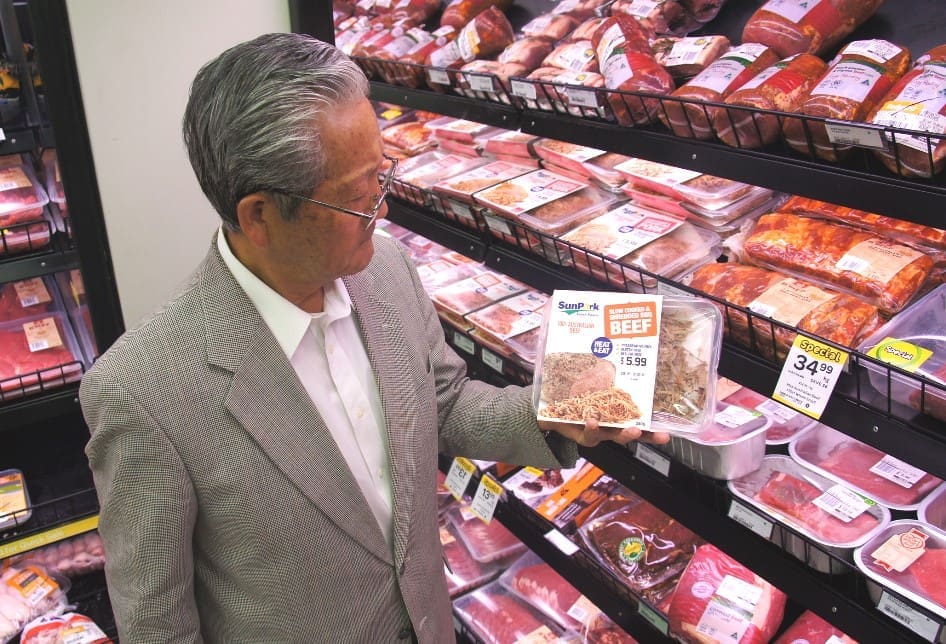Historically, each segment of the red meat sector, be it producer, transporter, processor, wholesaler, retailer or service provider, has considered itself a link in the industry supply chain. Each link has been a discrete component of the greater process of taking food from the paddock to the dinner table.
The pressures of time, input costs, fluctuations in the Australian dollar and volatile weather, each of which are challenges agriculturally-based businesses must consistently grapple with and manage for, have largely meant there has been limited scope for industry participants to work towards a mutually beneficial outcome. In fact, the common goal of each component has often not stretched beyond gaining the best price for product as it leaves the realm of the individual’s responsibility and moves to the next link in the chain.
However, the market options for Australian beef and sheepmeat are growing at such a pace, particularly in Asia and the Middle East, this individualised approach must be reviewed if we are to capture the benefit of these opportunities. As such, MLA is now driving a change in the way we view our industry from a ‘supply chain’, comprised of individual components, to a ‘value chain’ combining the collective strength of each link to strive towards shared industry goals.
In an operating environment where increasingly the consumer is king we, as an entire industry, need to understand more than just what customer-driven expectations mean for the retailer, who operates at one end of the value chain and serves as the direct consumer interface. It is imperative each of us, regardless of where we sit in the chain, has an awareness of our roles and responsibilities as participants in the production process and how we contribute to giving the consumer what they want.
It is at this point that the transition is made from ‘supply chain’ to ‘value chain’ and all of industry seeks to not only find ways to deliver more value to the customer but also to capture a higher value for our product. In a true value chain there is little room for pushing products out the door and hoping for the best.
MLA, in collaboration with DAFWA, recently hosted a group of Western Australian sheepmeat producers, processors and farm consultants on a tour of China to engage directly with our customers and to understand the complexities of that market. We visited wet markets, specialist red meat retail outlets and high-end supermarkets in major cities and garnered valuable insights into how, as an entire industry, we can collaboratively focus efforts on both delivering value to customers and extracting value and profit..
We took time to directly experience traditional Chinese sheepmeat cuisine and to understand the country’s concerns surrounding food security and safety and the lack of trust in the domestic food productions systems due to recent scandals.
We saw the dominant use of sheepmeat in China for traditional cooking methods based on lower value secondary cuts and that there are clear opportunities to increase awareness among Chinese consumers of new culinary methods based on high value products.
Additionally, we observed firsthand the constraints imposed by the lack of market access for chilled sheepmeat and the potential loss of integrity in identifying product as Australian.
However, what we also saw was a growing middle class of between 360 and 520 million people looking to increase their access to safe and healthy protein. The sheer scale of the opportunity in China will mean new opportunities and segments will consistently emerge and these changes must be closely monitored so that we can be positioned to respond. This premise is by no means limited to the sale of sheepmeat in China but is pertinent to all red meat markets.
To continue to operate as a ‘supply chain’ as opposed to a ‘value chain’ and to believe our clean and green image will be sufficient to future proof our success is not enough. The one-size-fits-all business model is now redundant given the ever changing and ever developing outlets for our red meat.
Over the next three, five, 10 or even 20 years, we can build our capabilities across the sector to spread our risk and ensure ongoing, strong demand for our product be this through investment in new technology, refining integrity systems or cultural changes in the way we do business. Never before has there been a better time to work as a modern, insightful, responsive, responsible and collective force for the benefit of all segments of the industry.
Source: MLA. Dr Christine Pitt is General Manager of MLA’s Value Chain Innovation (VCI) unit who is responsible for developing and implementing global innovation insights and strategies that position beef and sheepmeat value chains for future growth and deliver benefits for levy payers. Dr Pitt also oversees the MLA Donor Company (MDC) which is a voluntary contribution funding mechanism that enables external organisations to co-invest in R&D projects that deliver whole of industry benefits. No producer levies are used in MDC projects

